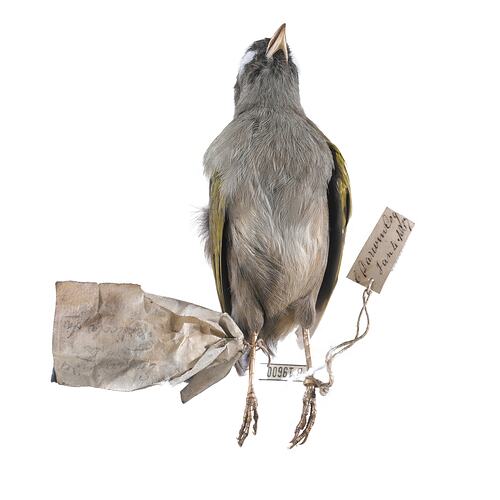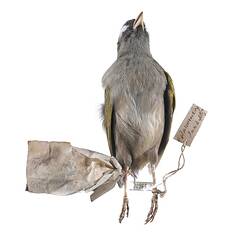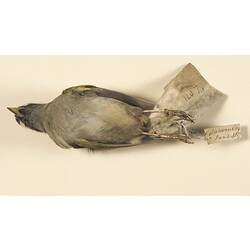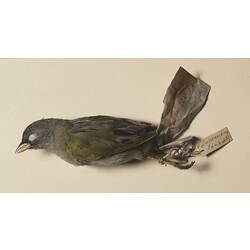Summary
This Great Pampa-Finch was collected by Charles Darwin in May 1833. The museum holds three specimens collected in South America by Darwin during the voyage of HMS Beagle. Two birds were sent to Melbourne between 1858 and 1869 by John Gould. The Great Pampa-Finch had been well prepared and conserved but lacks its tail. This specimen was obtained at Maldanado, Uruguay; a second bird, the Grassland Sparrow, was also from Uruguay. The Southern Mountain Cavy, a kind of guinea pig, was collected by Darwin in Patagonia in 1837.
Darwin (1809-82) is best known for his theory of evolution. Initially persuaded by his father to train as a physician, Darwin instead turned to the clergy. He joined HMS Beagle as an unpaid naturalist, and over five years sailed around the world. Observations made during this voyage led him to re-evaluate biodiversity and to question the mechanisms underlying the variety of species. Evidence for his theory of evolution included differences he observed between the finches on the Galapagos Islands off Ecuador. Each island was inhabited by a unique species remarkably adapted to its particular environment and way of life. In 1858, Darwin co-authored with Alfred Russel Wallace a scientific article on evolution. Their thesis challenged accepted beliefs about creation, but it was Darwin's expansion of these ideas in On the Origin of Species by Means of Natural Selection (1859) that set in train acceptance of the theory initially given a hostile reception in some quarters.
Specimen Details
-
Collection Names
-
Taxon Name
-
Type Status
Syntype
-
Preferred Common name
Great Pampa-Finch
-
Number Of Specimens
1
-
Sex
Unknown
-
Specimen Nature
Nature: Skin, Form: Dry
-
Collector
-
Purchased from
-
Collected By
Charles Darwin
-
Category
-
Scientific Group
-
Discipline
-
Collecting Areas
-
Type of Item
-
Keywords
Taxonomy
-
Kingdom
-
Phylum
-
Subphylum
-
Class
-
Order
-
Family
-
Genus
-
Species Name
platensis
-
Subspecies
platensis
Geospatial Information
-
Country
-
Precise Location
Maldanado



